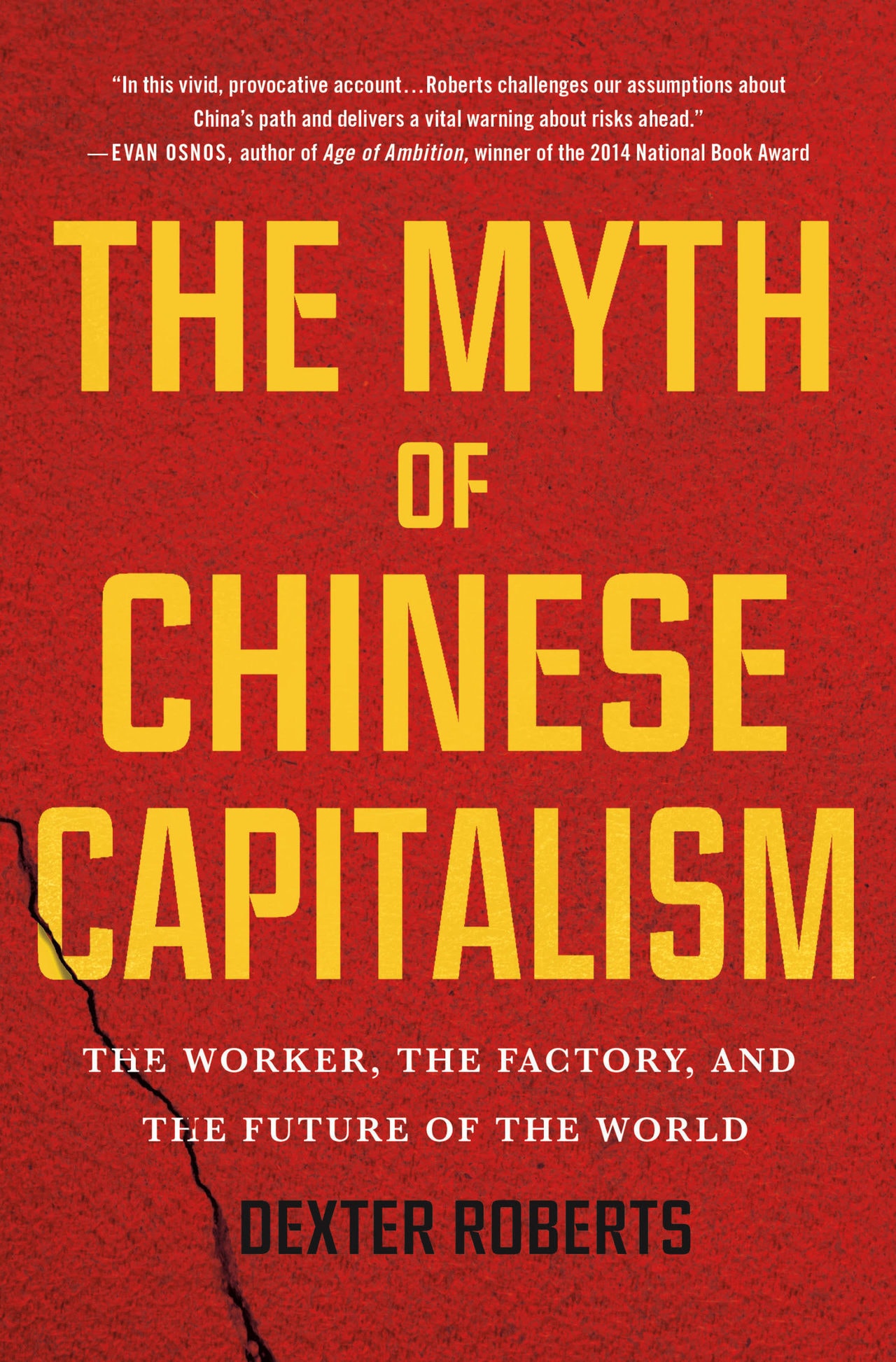Dexter Roberts lived in Beijing for more than two decades reporting on economics, business and politics for Bloomberg Businessweek. In his new book, The Myth of Chinese Capitalism: The Worker, the Factory, and the Future of the World, Roberts looks at what actually powers the Chinese economic machine. From the rural villages that supply the vast numbers of migrant workers to what this massive internal migration has meant for China’s education and healthcare systems. Most importantly, The Myth of Chinese Capitalism considers just how Chinese capitalism might evolve in the coming decades. Paul French spoke to Dexter Roberts, self-isolating in Montana.
In the book, you say China is at a ‘critical turning point’ – investment-led growth has led to bad debt and Non-Performing Loans. Can China get out this debt trap?
Following the 2008 global financial crisis, China launched a massive stimulus programme to keep its economy afloat. It worked, in that China avoided the dramatic falls in economic growth that many other parts of the world saw. But that reliance on debt to drive the economy then became a bad habit that the government has yet to overcome. Total debt as a proportion of GDP is now more than 300 percent and has been growing steadily. This kind of growth at this level is seen by many economists as unsustainable. China’s leaders know what they need to do: in order to break their reliance on debt-fuelled growth – which by the way has contributed to the country’s pollution problem and has been energy wasteful – they need to build up a much stronger consumer and service-driven economy. But while progress has been made, they are still struggling to grow the proportion of the economy made up of domestic consumption; it is still below 40 percent, a rate not much changed in years, and one that is some twenty percentage points below the world average.
How scary are the demographics? Has China run out of its once seemingly limitless supply of young workers?
What had been what economists call a “demographic dividend” has now become something of a demographic time-bomb for China. And recent moves towards ending the notorious one-child policy appear to be too late; couples have reached an income and education level where they are no longer interested in having more children. The high costs of education in China also discourage families from having more kids. As the workforce ages (and it recently began to shrink in overall size too), innovation tends to suffer; those who are older typically are not as willing to take risks with new ideas and that hurts the economy’s vibrancy, research by Ctrip founder James Liang has shown. In the factories, demographics, of course, has had a huge impact as workers age, shortages emerge, and wages rise. Overall competitiveness has suffered, with manufacturing wages now higher than in Mexico or Malaysia. Meanwhile, the cost of supporting an ageing population with ever more retirees is substantial. It is putting pressures on the finances of local governments and families alike, who have to pay for new health care and pension costs.
The economic ‘rebalancing’ away from FDI and manufacture to retail and services has really been all about the urban middle class. How is rebalancing playing out in the countryside?
In my mind, this is the biggest challenge facing China: ensuring that the other half of the country who still live in rural China or are migrants who hail from the interior regions, also become part of the spending middle class. This is a top government priority and is critical to the success or failure of the China model going forward; it will not be easy and may well fail. One of the biggest obstacles is the continuing strength of the hukou policy. That means that migrants are unable in most cases to access affordable healthcare in the cities they live in or put their children in urban public schools. Instead, they are supposed to return to the countryside for their medical needs, put their children in low quality but often pricey private schools that cater to migrants, or leave their offspring as ‘left-behind children’ in the interior. The policy also explains the prevalence in China of what economists call ‘precautionary savings’ – when people are afraid to spend too much today and instead are saving most of their earnings to pay future costs of education, healthcare or retirement. That too helps explain why China has a savings rate of around 45 percent, much higher than in most places around the world.
You say the government now favours ‘reverse migration’, back from the city to the country, as a way to help care for the rising rural elderly population, and revitalise local economies with small businesses. Is this happening and does it work?
The record of this policy is mixed. Policymakers do see the trend of migrants returning to their hometowns as positive, in that they can both be closer to their ageing parents, and help overcome the national tragedy of left-behind children or youth growing up in the countryside far from their mothers and fathers. Local governments in the interior have tried to ease the challenges faced by returnee migrants by providing training and financial help, often in the form of low-interest loans, for those who want to start their own businesses. The goal is that migrants will succeed as entrepreneurs upon their return and help to revitalise places that otherwise might lag as China develops. One challenge is that the returnees may feel like strangers in their own villages, after decades working in faraway cities, and thus may not have the right connections or knowledge to succeed. There are many cases already of returnees seeing their newly-formed small businesses fail.
It has been suggested that the problem of a lack of workers can be solved by automation and AI. Is this possible, and if so, you seem to suggest that it means employers are now looking to that future and ignoring better pay and conditions for human workers?
Even before the trade war and Covid-19 brought the issue of global diversification of supply chains to a head, factories producing lower-value products were leaving China in droves for countries in SE Asia and beyond. Now that trend has only accelerated. It is something that has long worried policymakers who do not want China to face the same hollowing out of industry that was seen in places like Japan. One plank of the national strategic upgrading plan “Made in China 2025” is focused on encouraging the automation of factories, along with building up a more competitive domestic robot-making industry, with both factories and automation companies being granted large subsidies in cities like Dongguan. This is helping China move more quickly towards a less labour-intensive manufacturing future. But it is also causing frictions between factory management and those migrant workers who do not want to return to their villages but would rather stay in the cities. In some cases, worker protests have erupted as factory managers have moved to quickly automate and shed employees.
Are there any good business success models for rural returnees?
In rural Guizhou, local governments are trying to encourage returnees to set up small businesses in ecotourism, with the aim of luring wealthier urbanites to holiday in this part of the country. In many ways, that is a natural choice, given the stunning mountain scenery, interesting ethnic diversity found among the people living there, and the spicy local cuisine, not to mention the clean environment with little industry in most of the province. Other places including neighbouring Yunnan have tried to use e-commerce to find markets for local delicacies, whether it’s Pu’er tea or wild mushrooms. Both of these models have been successful to a degree, although not without facing challenges. One common problem has been the phenomenon where everyone jumps into the same business and creates a glut, where for example, hundreds of rural villages all might be competing for the same tourists. Provincial governments too have often focused on large capital-heavy, but low labour-intensity vanity projects, like Guizhou’s push to make its capital of Guiyang into a national Big Data centre; the trouble is it provides little employment for the large numbers of migrants now returning.



